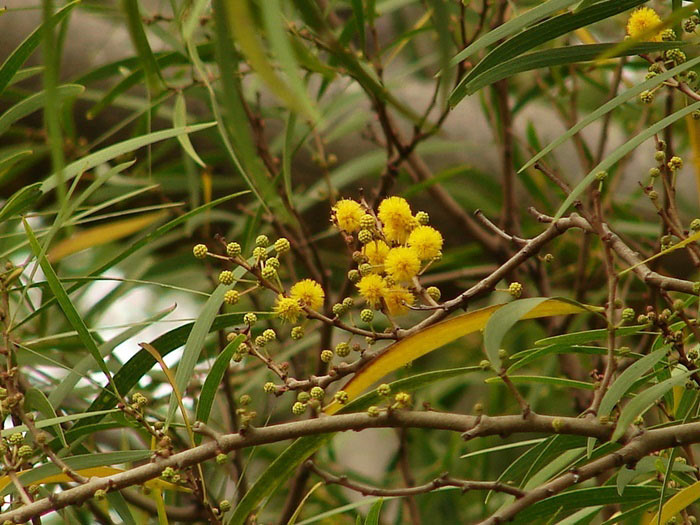Acacia confusa
The Taiwan acacia is distributed in China, Taiwan, and the Philippines. It is native to the Hengchun Peninsula in Taiwan, but due to widespread afforestation, it can now be found throughout the island from the plains to the foothills and hillsides at an altitude of 600 meters. It is more commonly seen in secondary forests and open areas.
The leaves of the Taiwan acacia undergo unique morphological changes. During the seedling stage, the leaves are complete bipinnate compound leaves. As the tree matures, the leaves that develop later retain only flat petioles, with all other parts, including the leaf blades, completely disappearing. This disappearance of the leaf blades is believed to be an adaptive strategy of the Taiwan acacia to arid environments. The flattened petiole is referred to as a leaf-like petiole or phyllode, which is thick in texture and significantly reduces water transpiration, thereby retaining precious moisture within the plant. The phyllode also functions similarly to a leaf, containing chloroplasts capable of photosynthesis to produce nutrients for other parts of the plant. This specialization enables the Taiwan acacia to survive in water-scarce environments.
Every year after the Qingming Festival, the Taiwan acacias are ready to bloom, with small golden flowers blooming continuously until the beginning of summer. They bloom most profusely around the Grain Rain solar term, and at this juncture between spring and summer, the Taiwan acacias remind people of the changing seasons with their dazzling colors.
The wood of the Taiwan acacia is hard and durable, making it widely used for various purposes and highly valued. Its economic value is significant, making it one of Taiwan's important economic tree species. Taiwan acacia wood has a wide range of applications, including railway sleepers and mine supports. It is also commonly used as building material, particularly as raw material for flooring and furniture, where its stability and durability are highly valued. Additionally, Taiwan acacia wood has fire-resistant properties and is often used to produce high-quality charcoal, which burns for extended periods and has a high calorific value.
